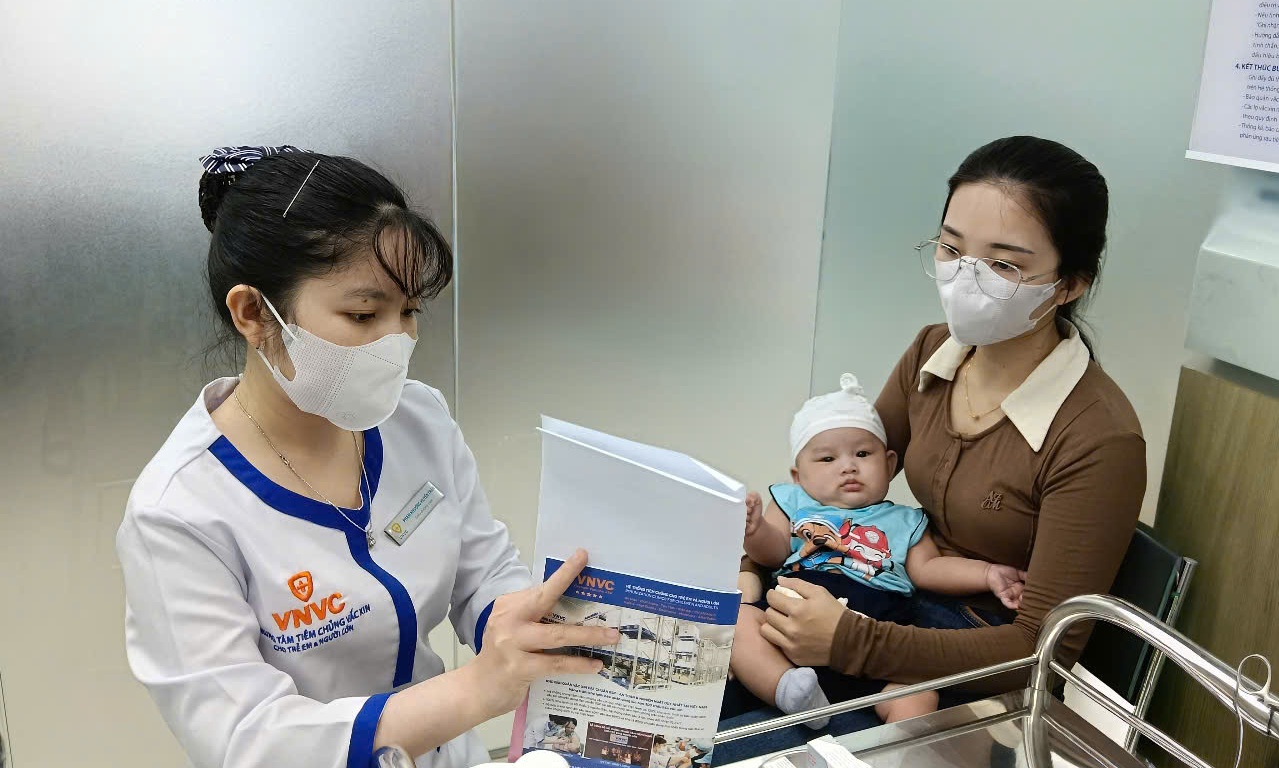Dr. Nguyen Le Nga, medical manager of the VNVC vaccination system, explained this in the context of dozens of whooping cough cases recorded nationwide since the beginning of the year. Dong Nai has reported 47 cases, including one death, and Cao Bang has 9 cases, also with one fatality, mostly among children. Most recently, Ho Chi Minh City recorded a case in Long Dien.
Whooping cough is a respiratory illness spread through direct contact with an infected person's nasal or throat secretions when they cough or sneeze. The bacteria can also be transmitted by sharing cups, hugging, or kissing. For young children who are primarily at home, the main source of infection is older children and adults in the household. Carriers can spread the bacteria from the onset of symptoms and for at least two weeks after. Consequently, many cases occur among family members.
 |
Anyone can get whooping cough, but children are at higher risk. Illustration: Vecteezy |
Initially, whooping cough manifests as a mild or absent fever, runny nose, cough, fatigue, and loss of appetite. These symptoms are easily confused with other respiratory infections like the flu, common cold, sinusitis, or tonsillitis. A persistent cough without fever might be mistaken for an airway obstruction in children or chronic obstructive pulmonary disease in older adults. This can lead to delayed diagnosis and prolonged spread of the infection.
Dr. Nga noted that anyone without whooping cough antibodies is susceptible to infection, with higher risks for young children, especially infants, pregnant women, the elderly, and individuals with underlying immune deficiencies.
According to Dr. Nga, whooping cough is characterized by uncontrollable coughing fits accompanied by a "whooping" sound as the person struggles to inhale oxygen, similar to a rooster's crow. These coughing fits often occur at night and can lead to vomiting, fainting, or even stopped breathing.
Without prompt treatment, complications can arise, including exhaustion from prolonged coughing, oxygen deprivation leading to respiratory distress, pneumonia, cerebral hypoxia, encephalitis, and even death, especially in infants and young children. Studies show that in adults, whooping cough can cause weight loss (33%), loss of bladder control (28%), fainting (6%), and rib fractures from severe coughing (4%).
According to UNICEF, before widespread vaccination, whooping cough was a leading cause of death in infants and young children globally. Approximately one in 10 infected children died, making it more deadly than measles and polio combined.
 |
Children receive vaccinations at the VNVC system. Photo: Hoang Duong |
To prevent whooping cough, Dr. Nga recommends maintaining personal hygiene, frequent handwashing with soap, covering the mouth when coughing or sneezing, and wearing a mask in crowded places. Vaccination is the most proactive and effective preventive measure.
Vietnam offers various vaccines against whooping cough for children from two months old, as early as 6 weeks old, and for adults: 6-in-1, 5-in-1, 4-in-1 (diphtheria, whooping cough, tetanus, polio), and 3-in-1 (diphtheria, whooping cough, tetanus).
Immunity from the whooping cough vaccine decreases over time. After the initial doses before the age of two, booster shots are needed at 4-6 years, 9-15 years, and every 10 years thereafter.
Adults unsure of their vaccination history should receive one dose of the whooping cough vaccine and a booster every 10 years. Pregnant women should be vaccinated during the second or third trimester to provide passive immunity to the fetus, protecting the baby before they are eligible for vaccination.
Hue Lan












